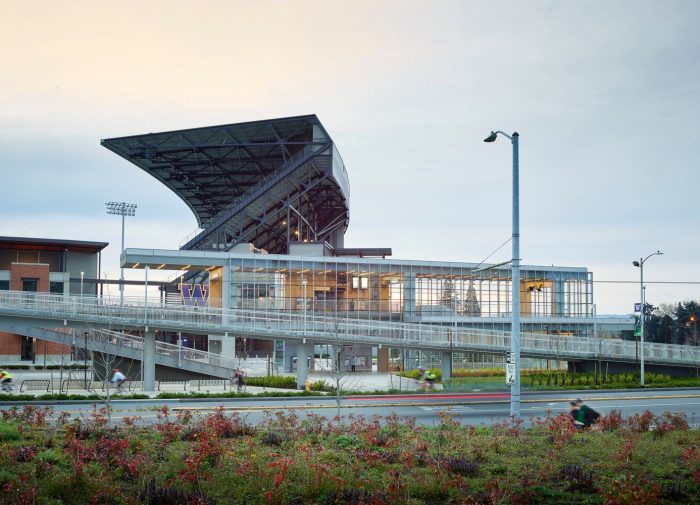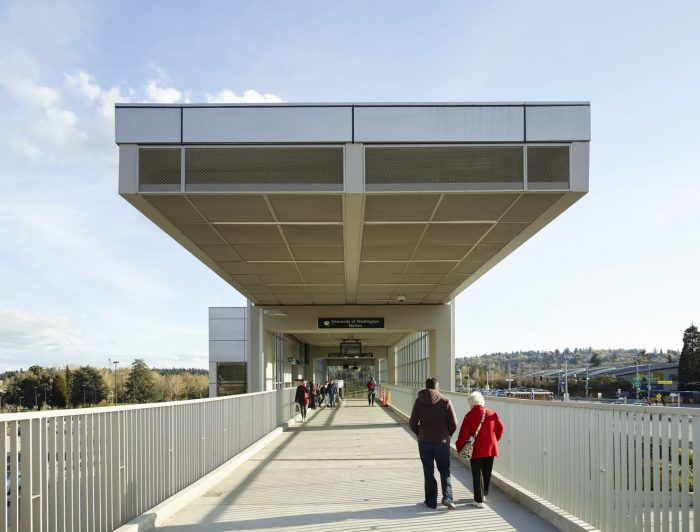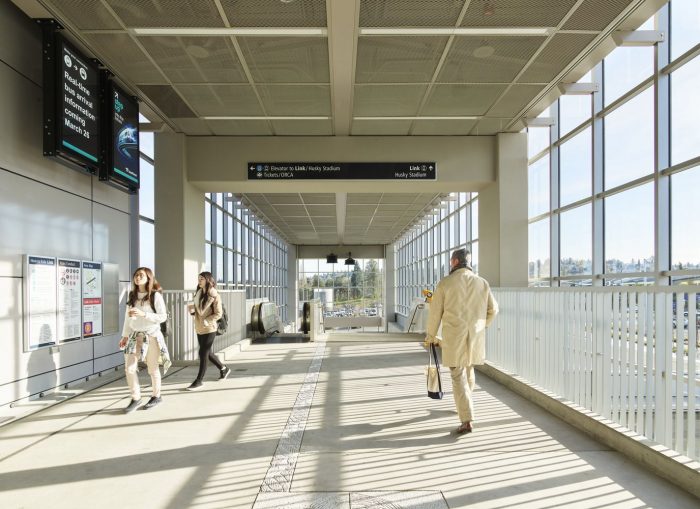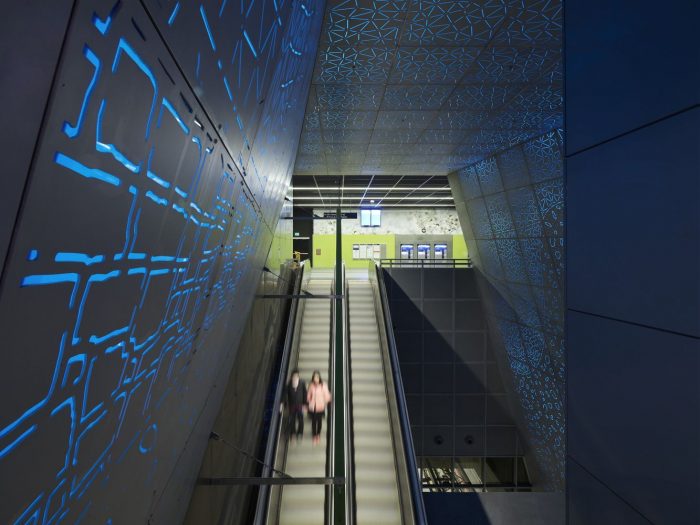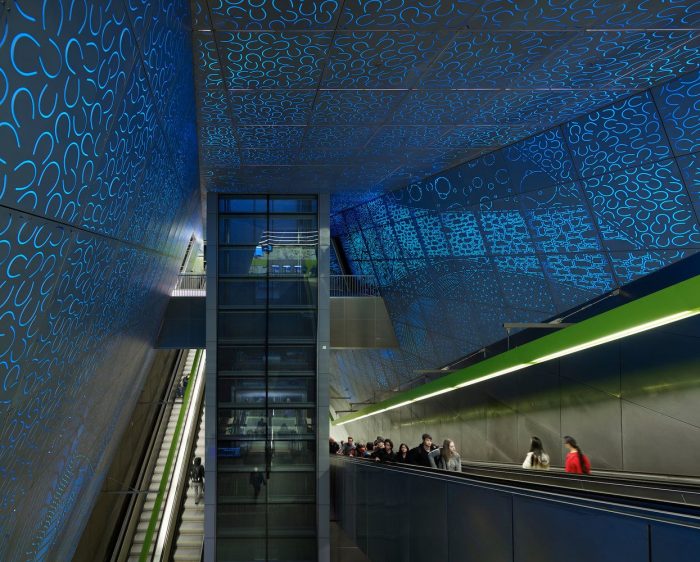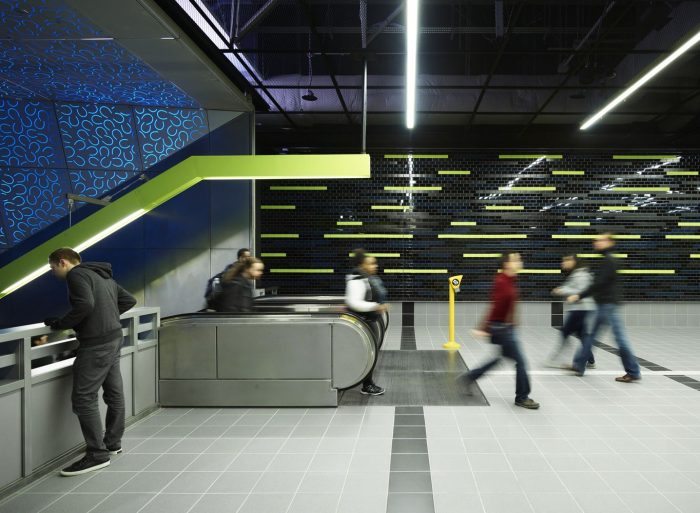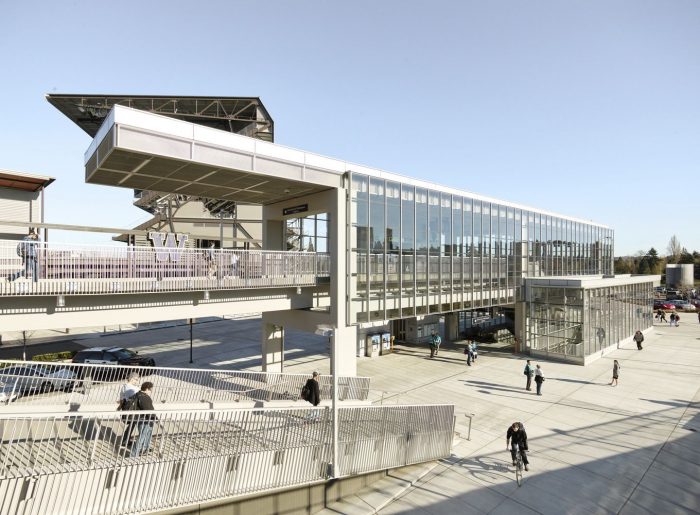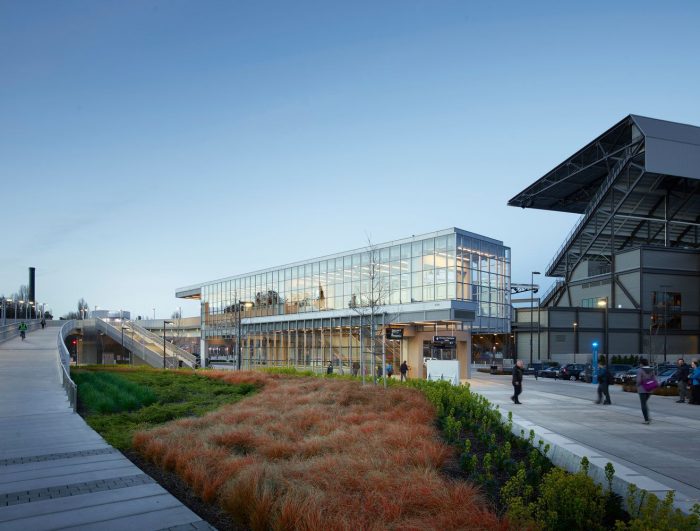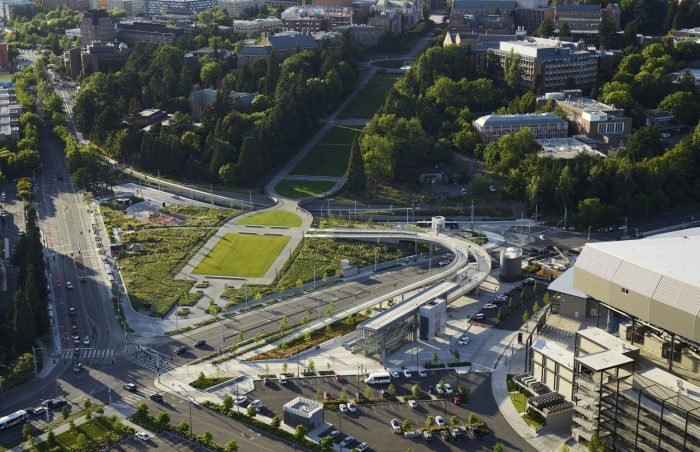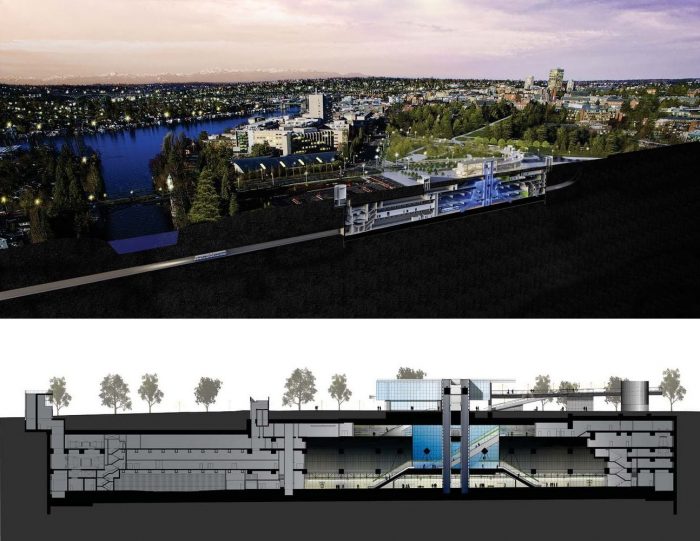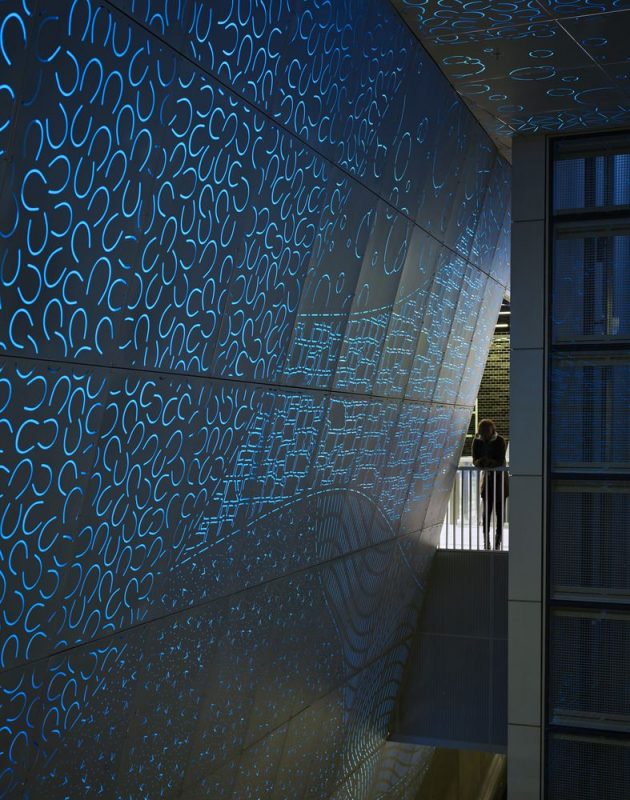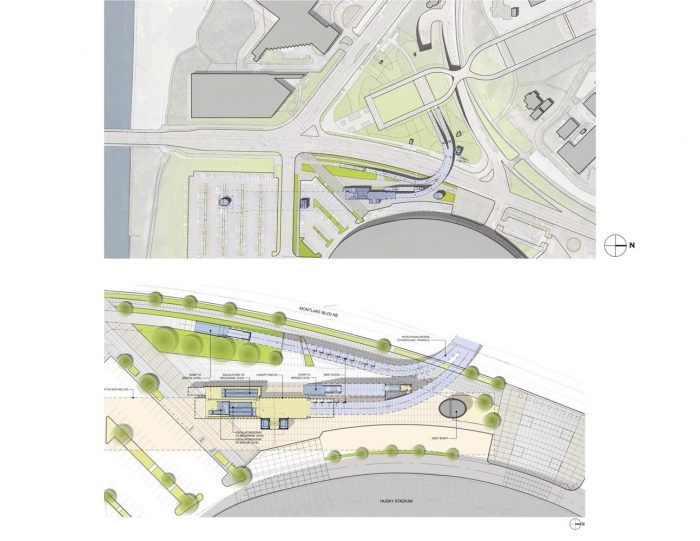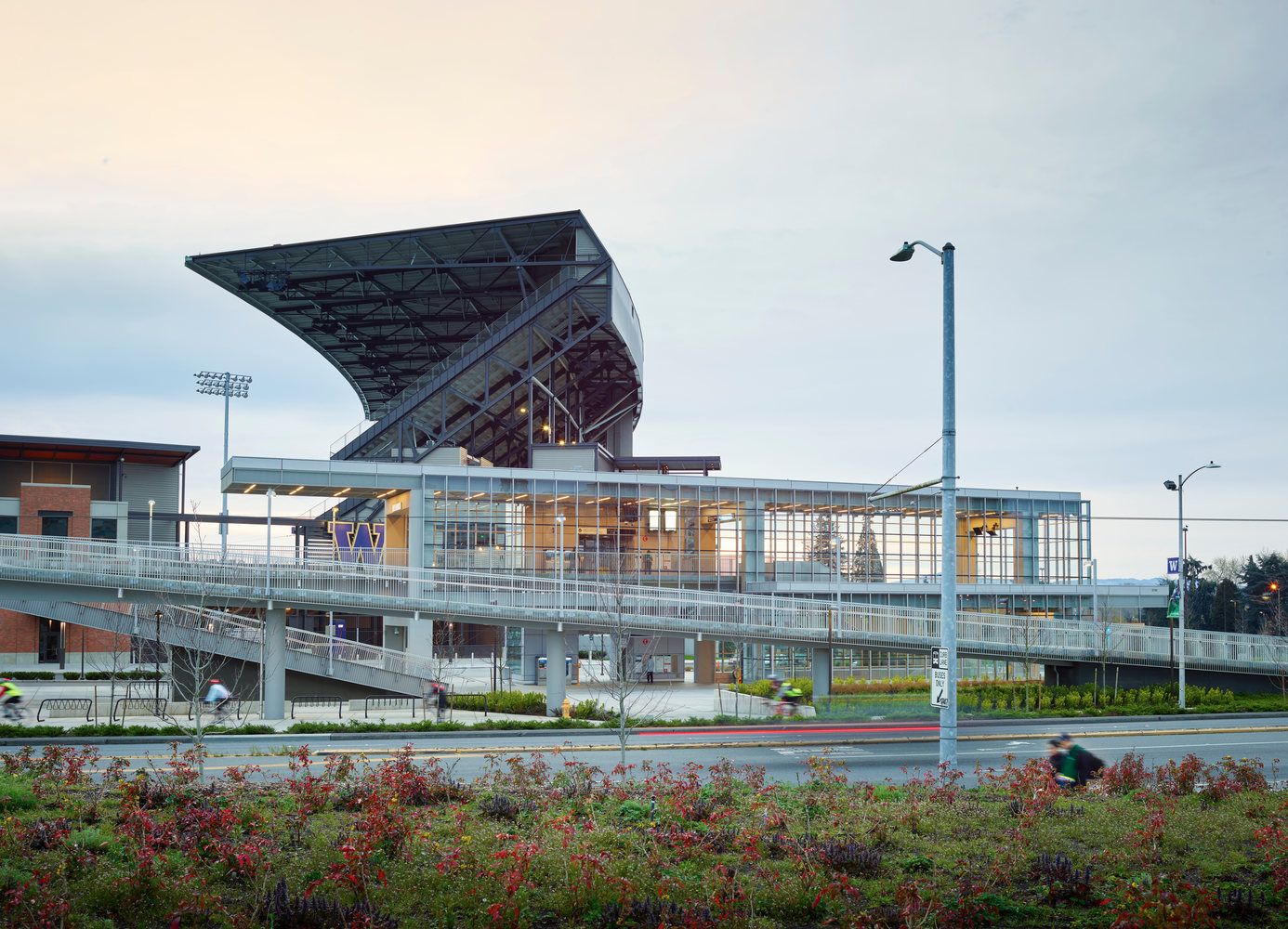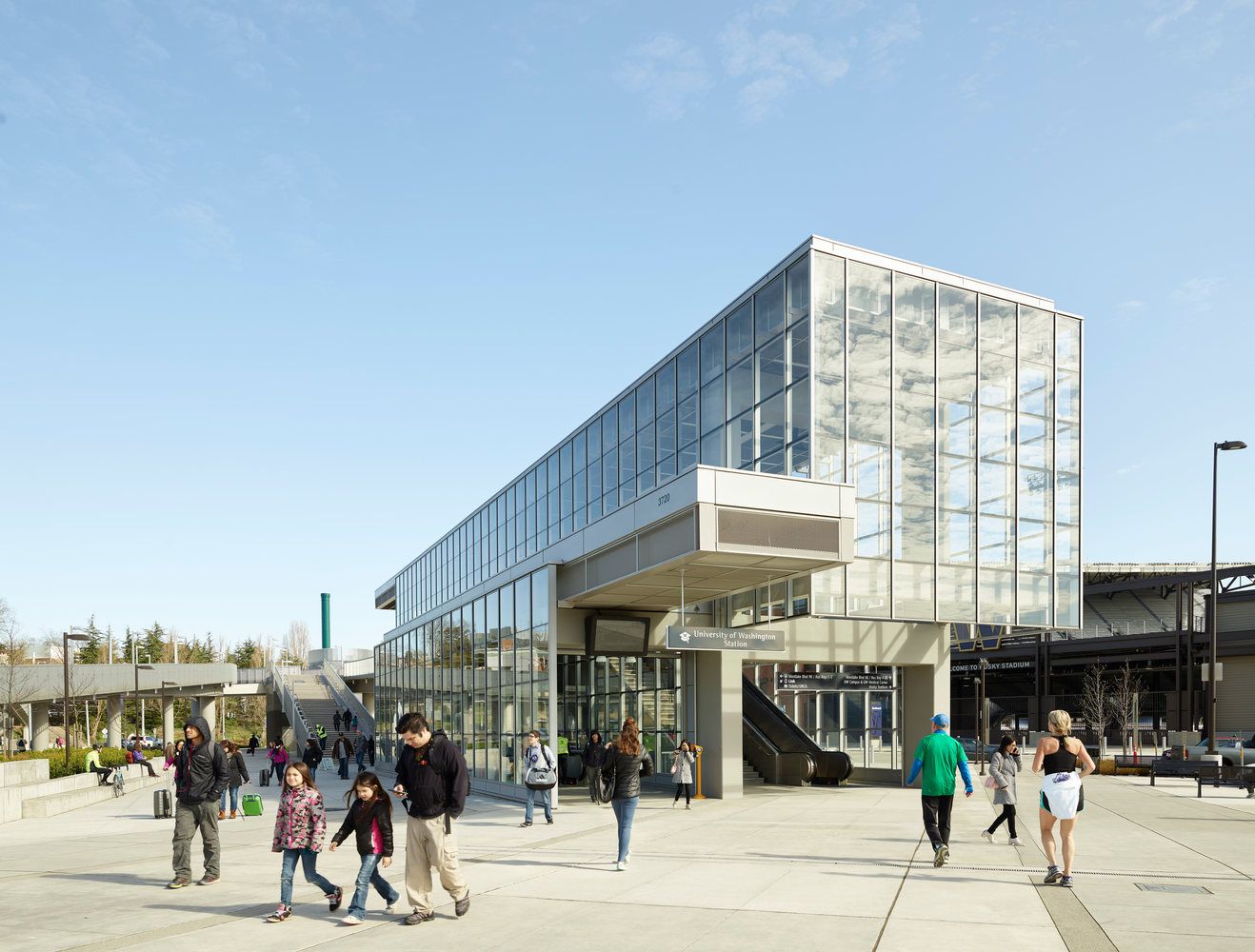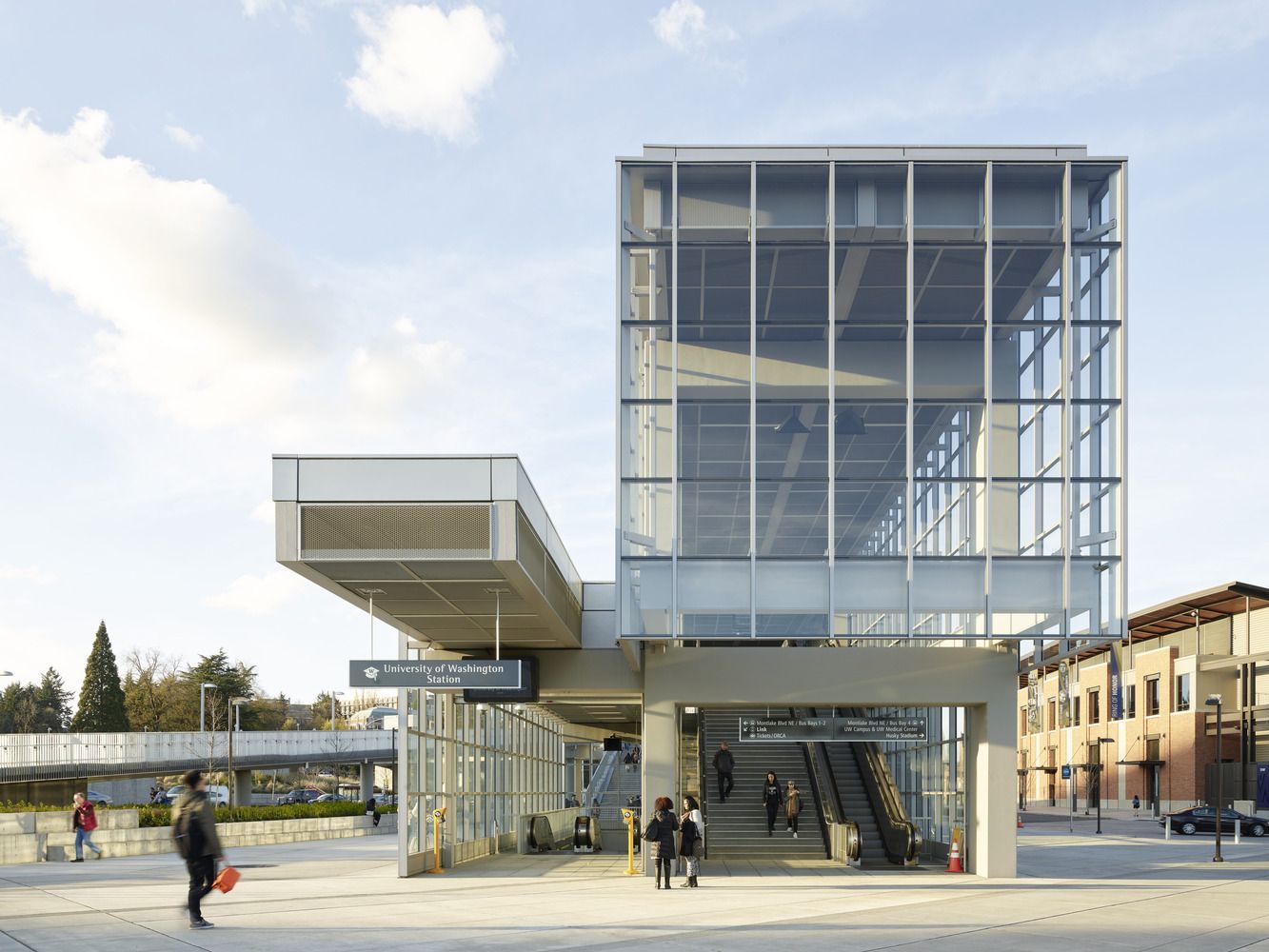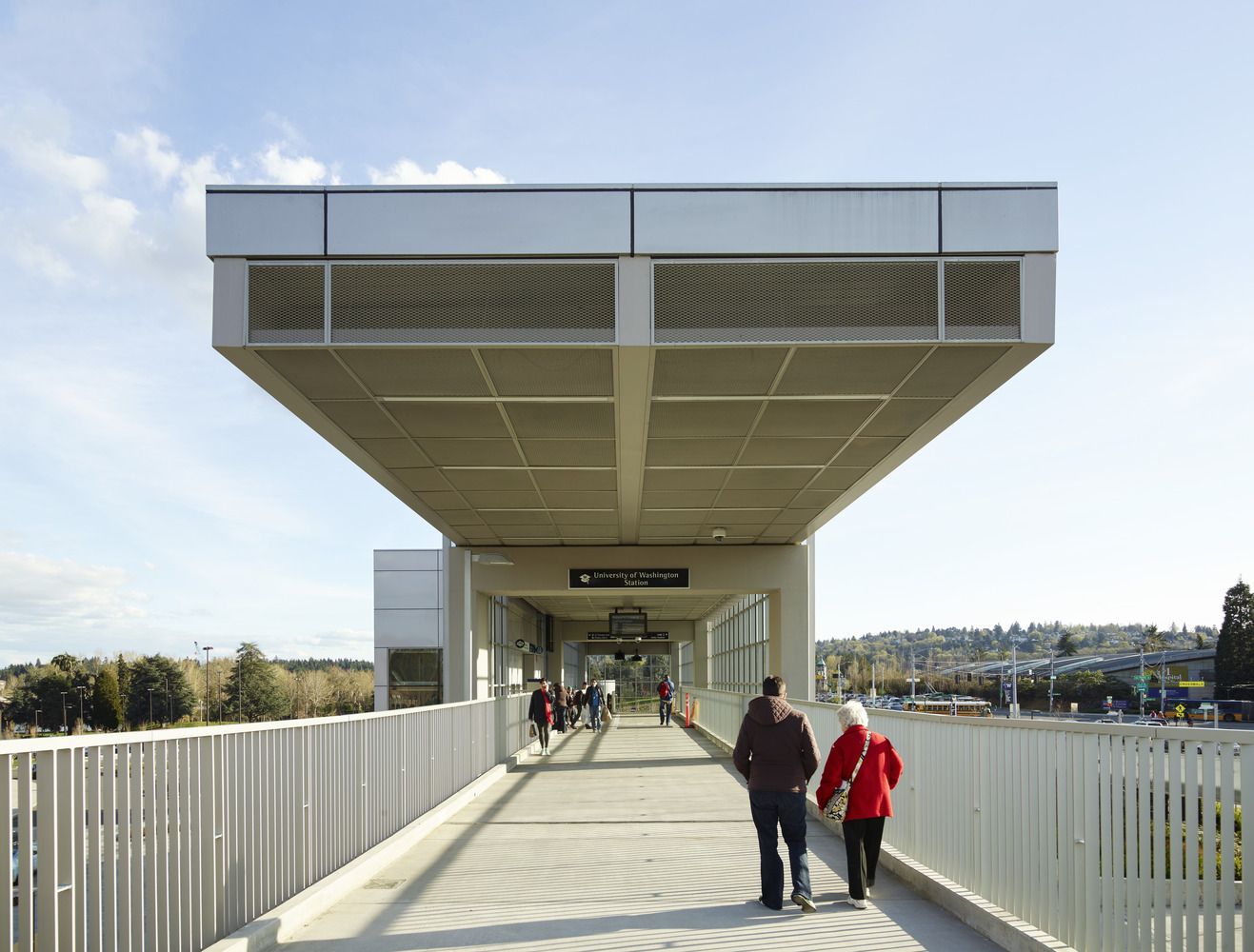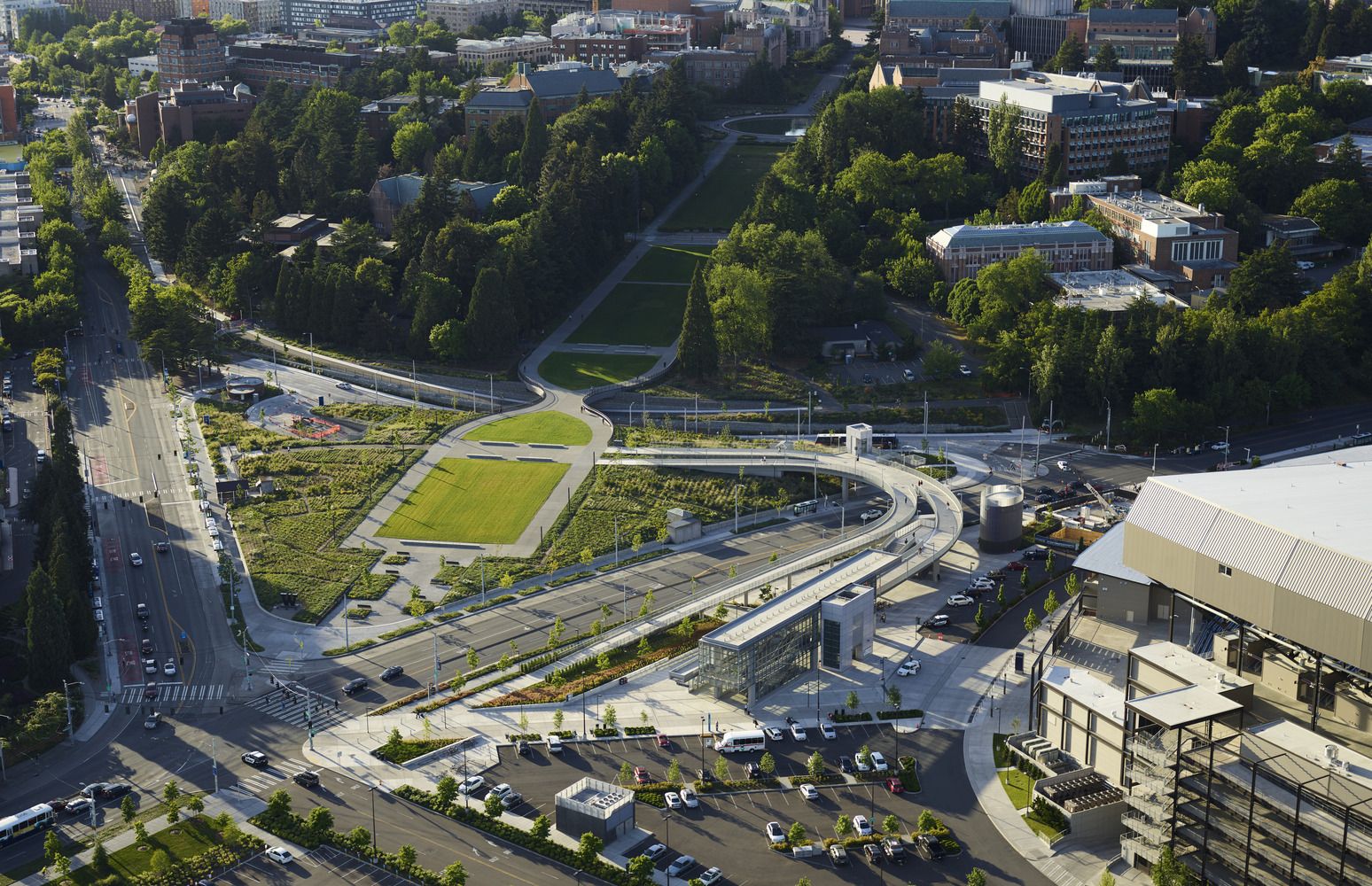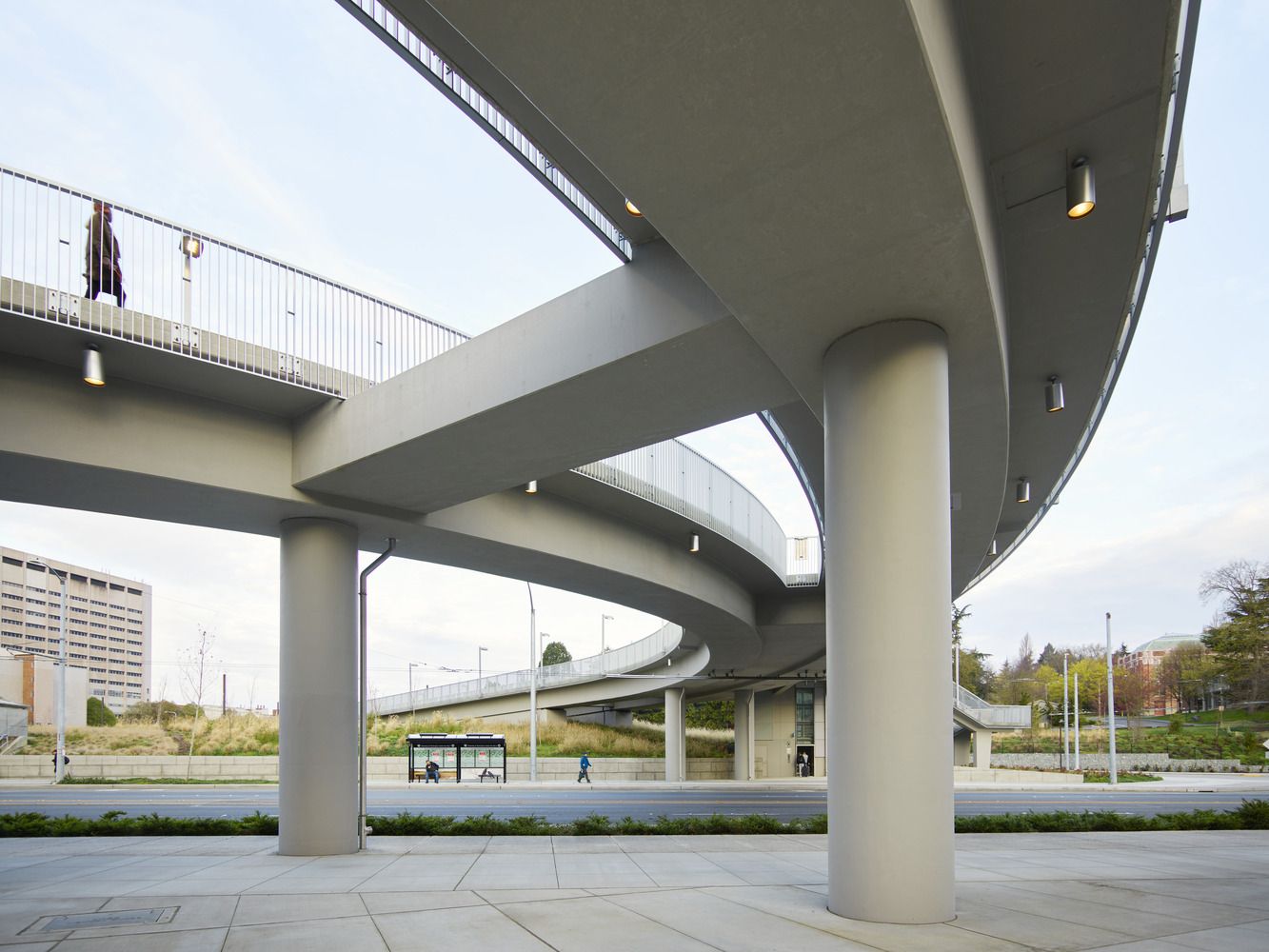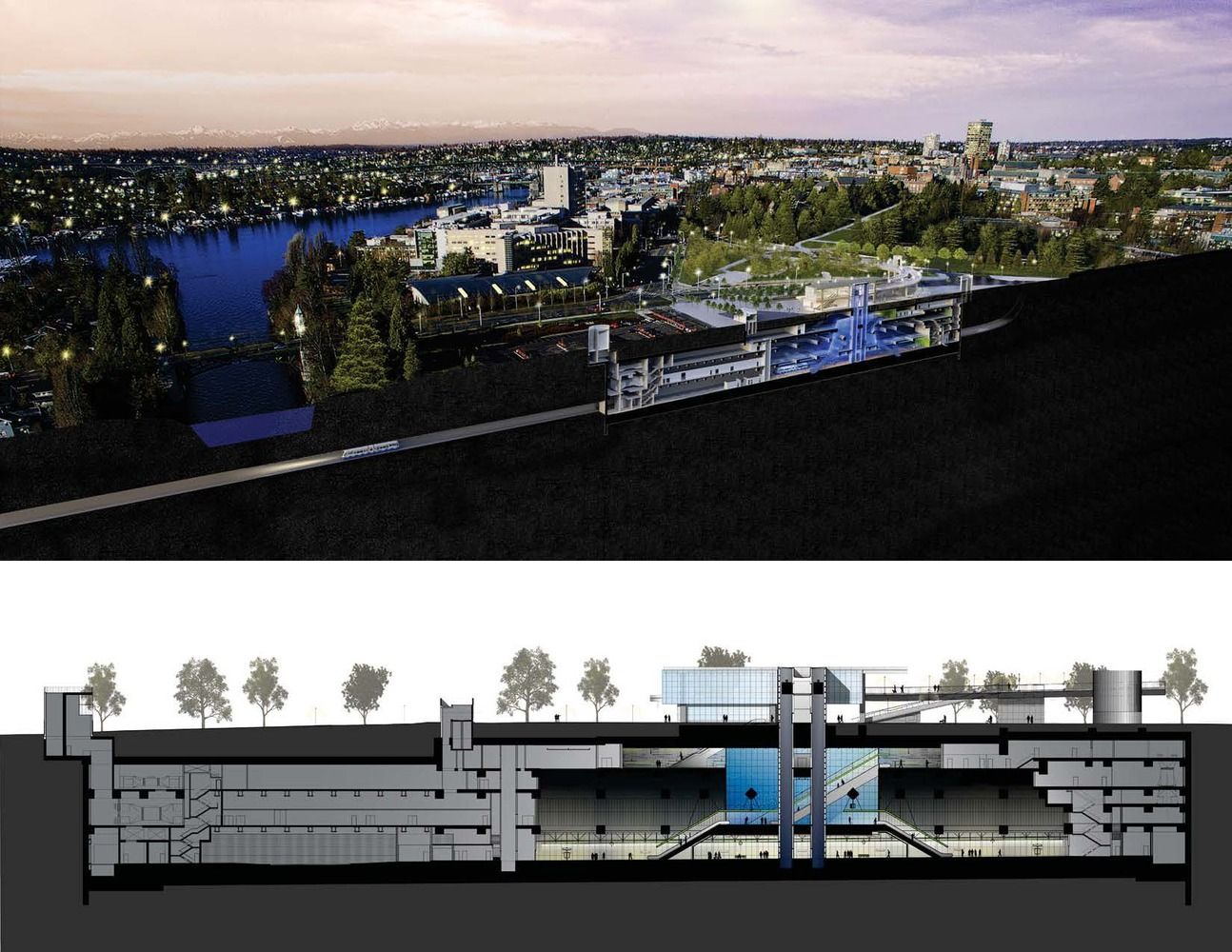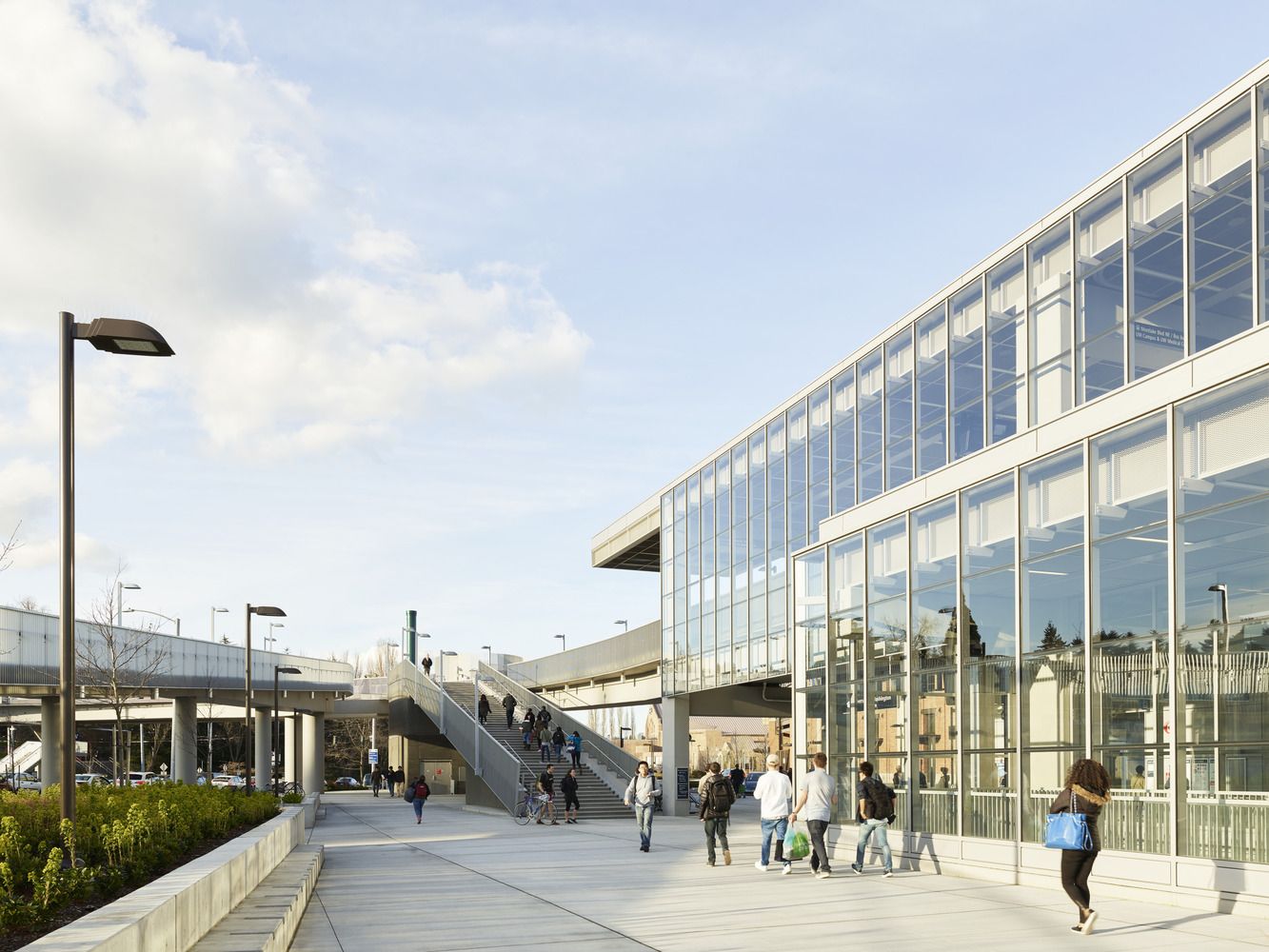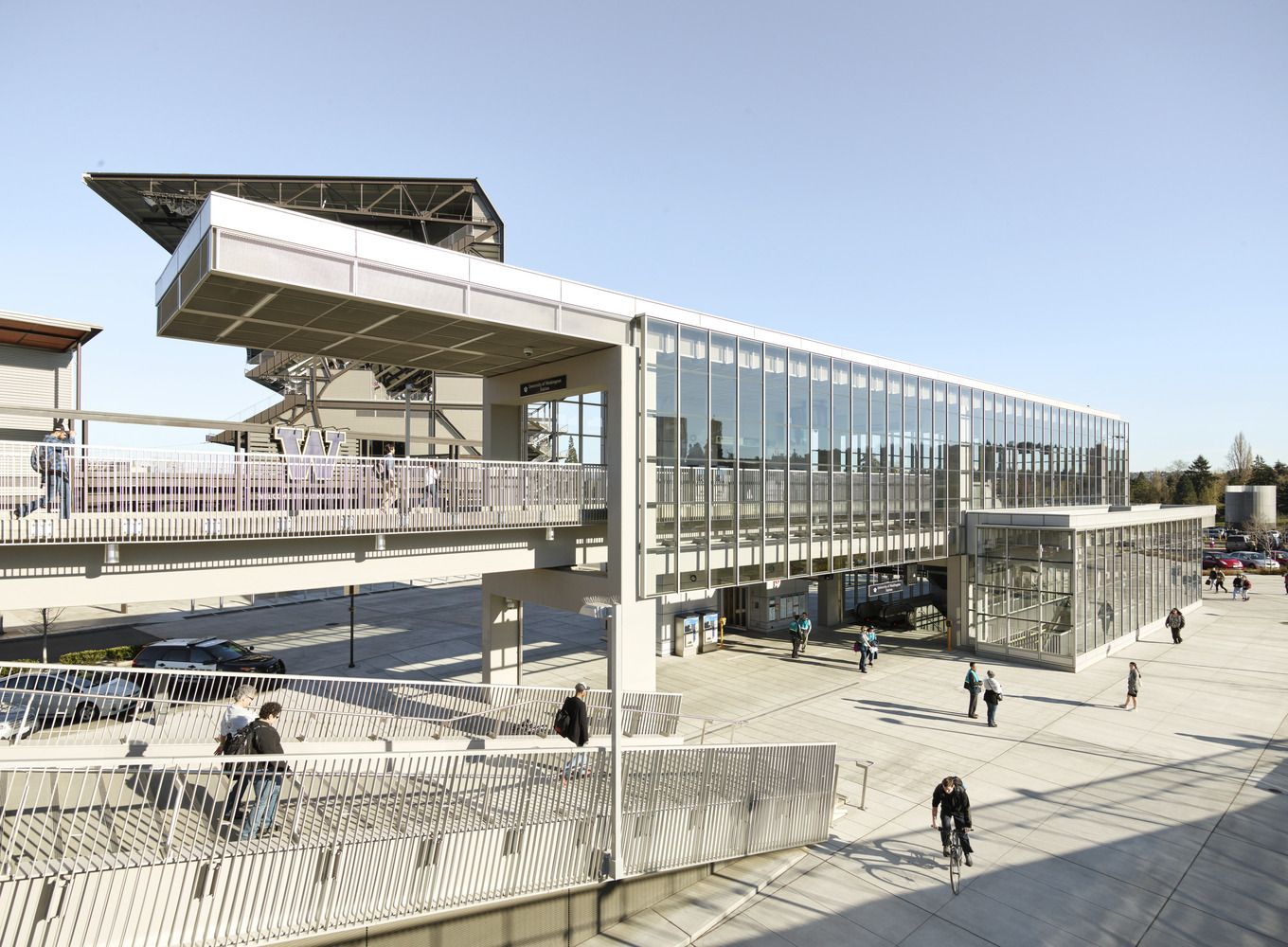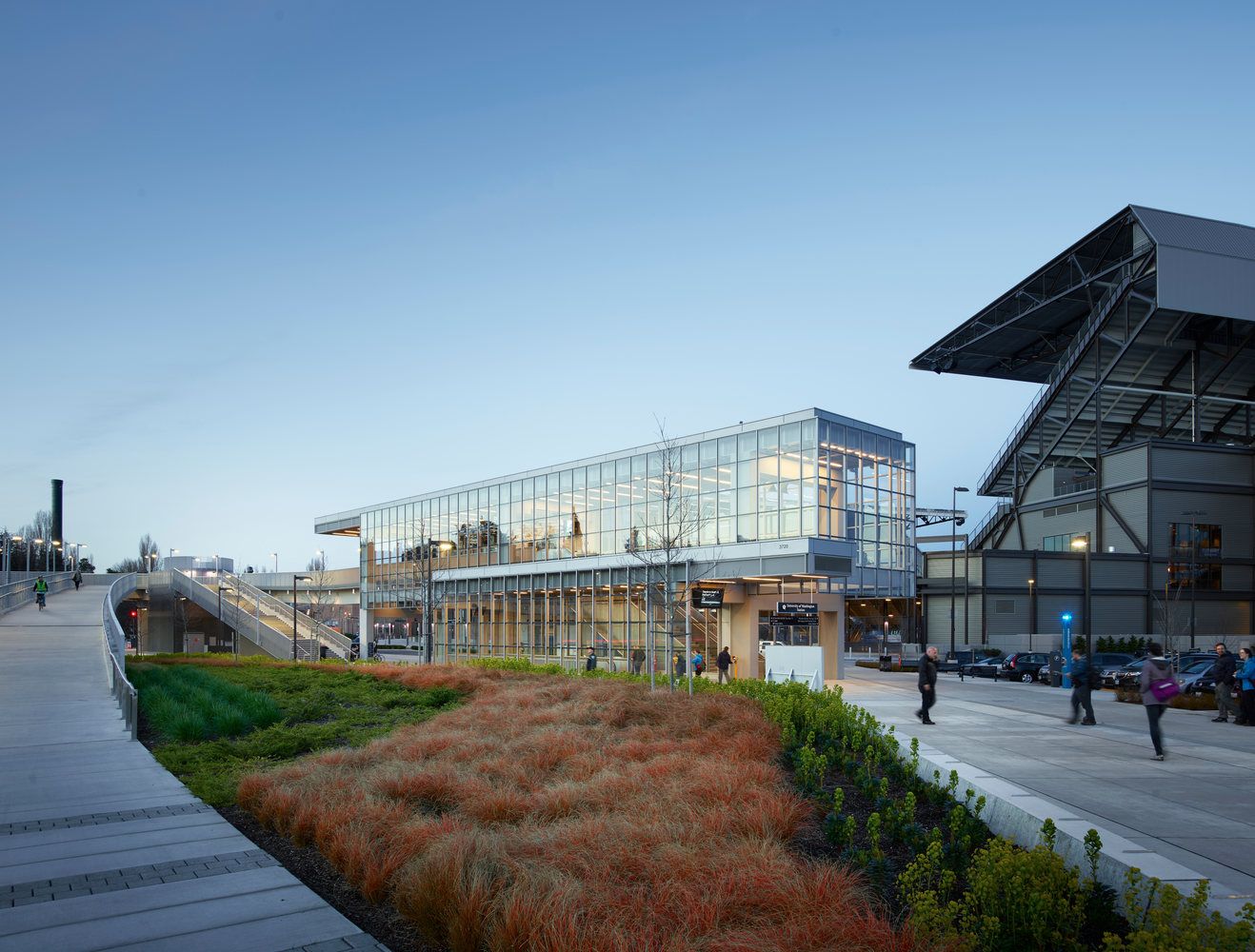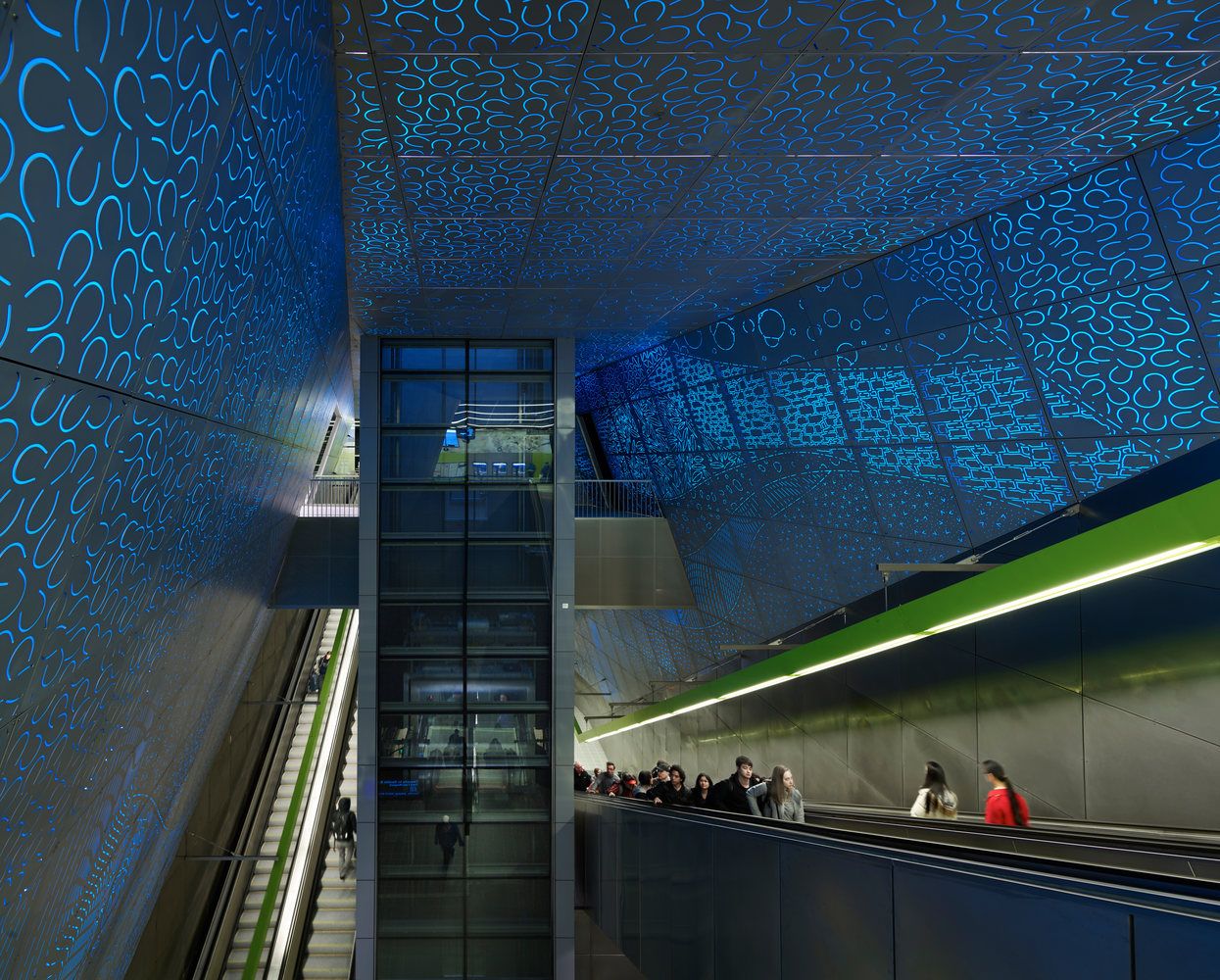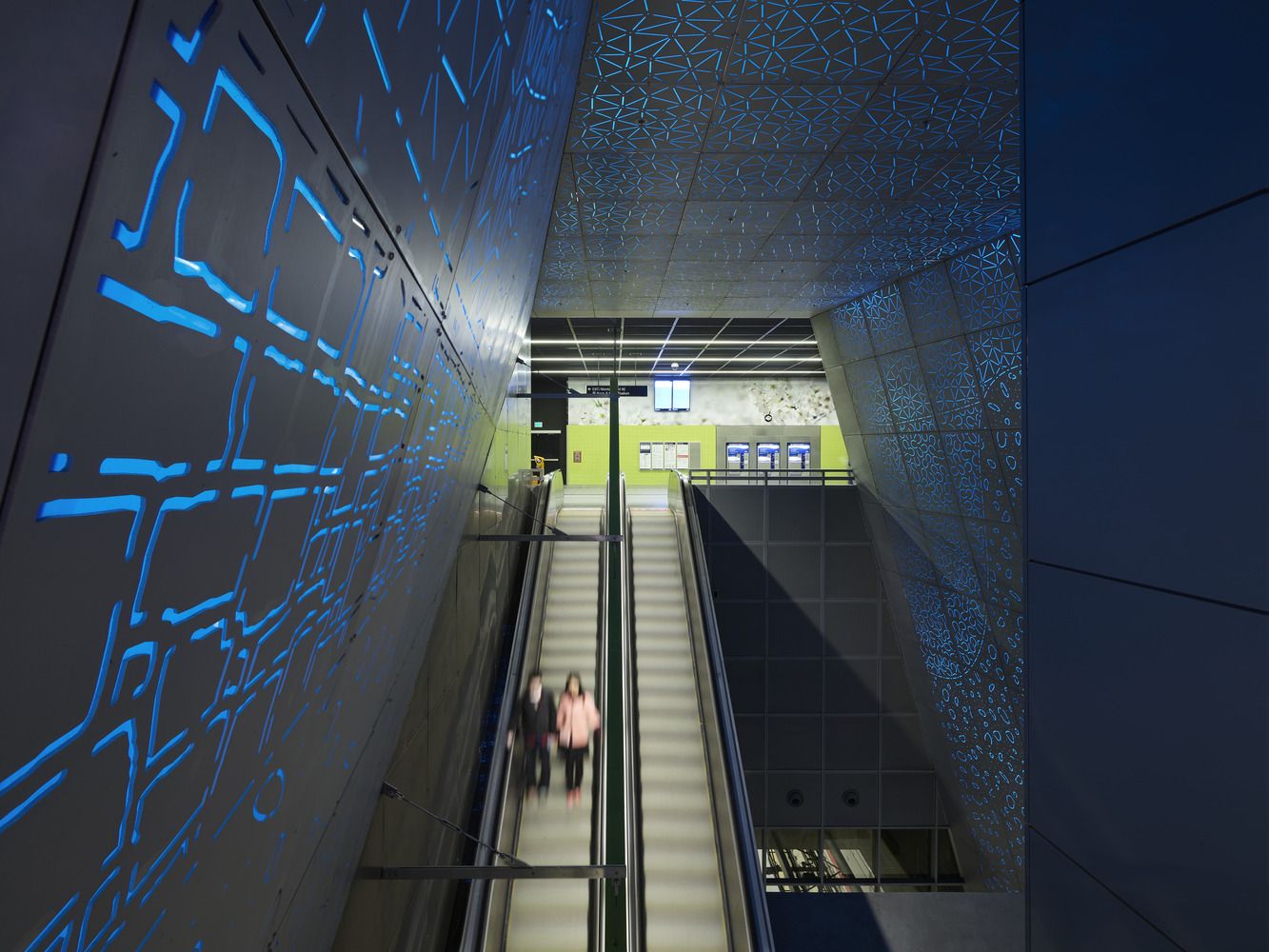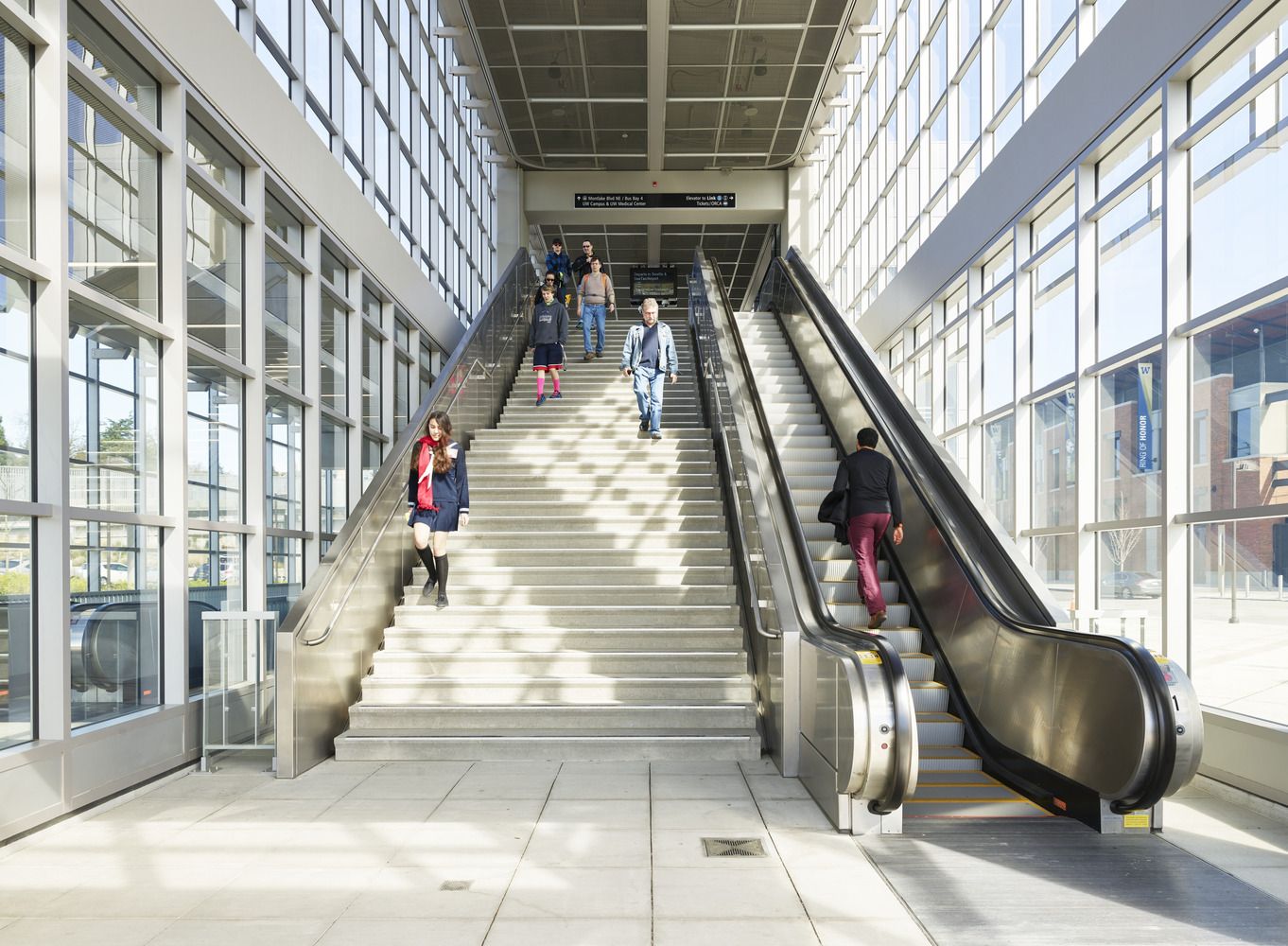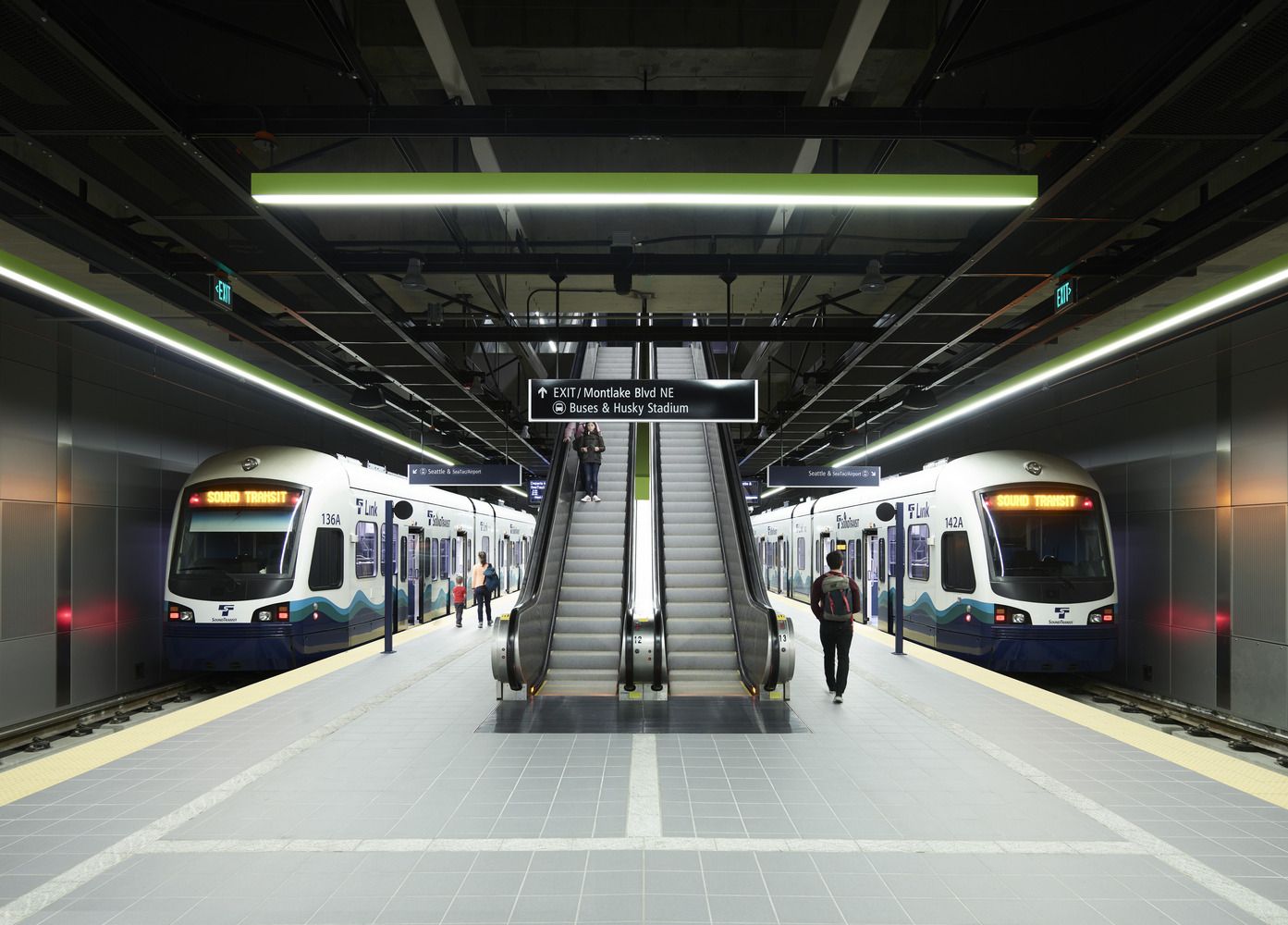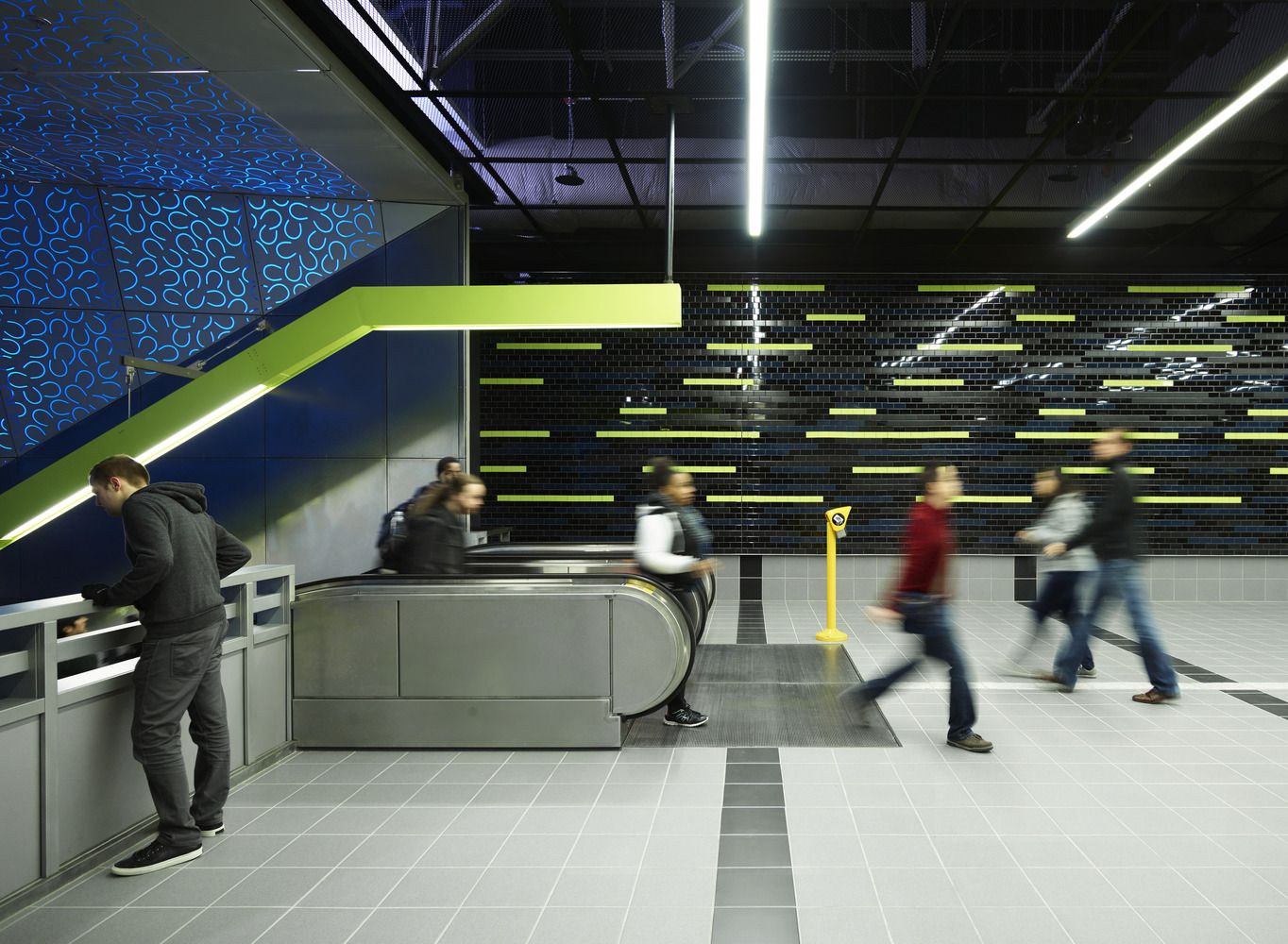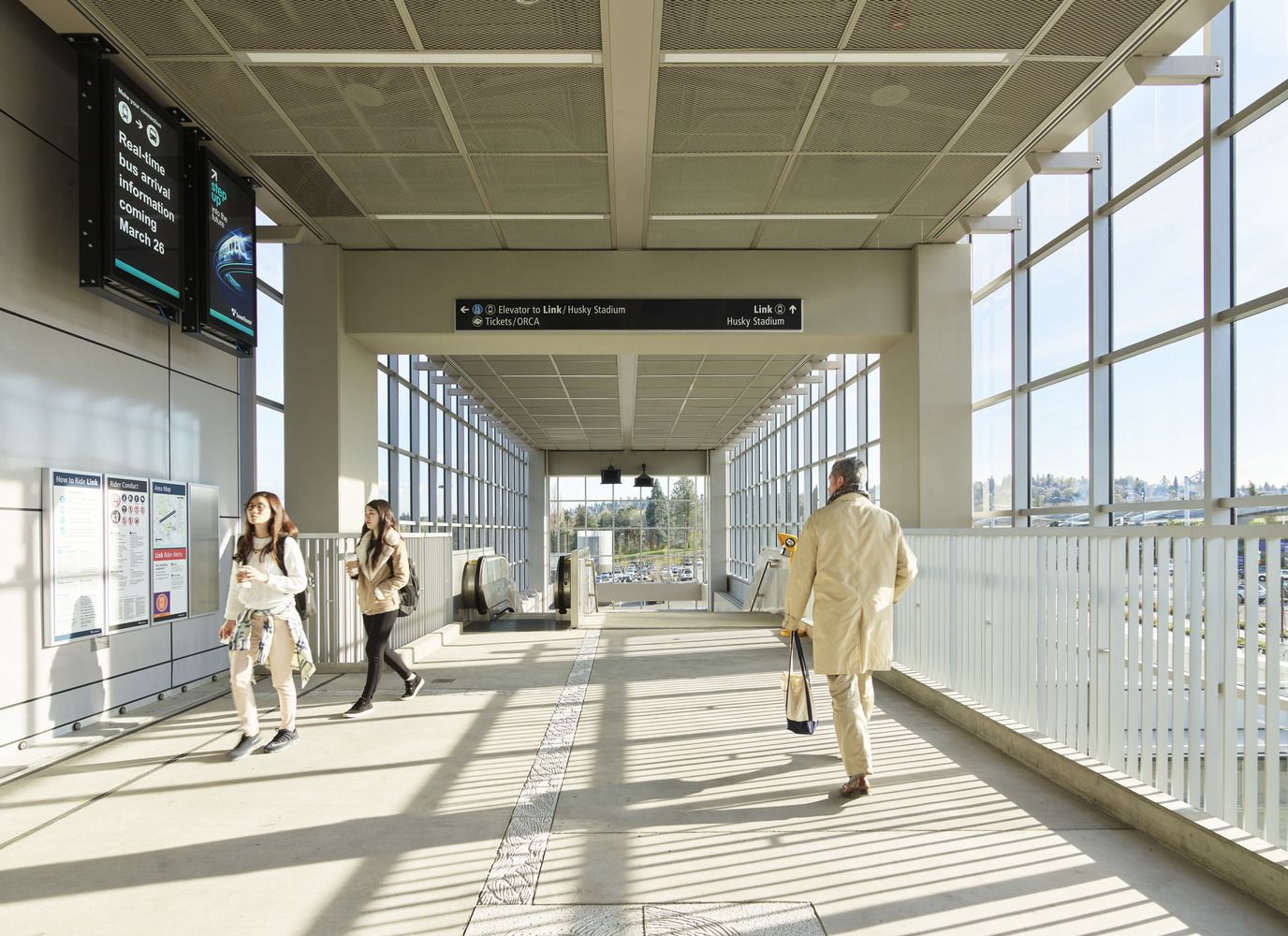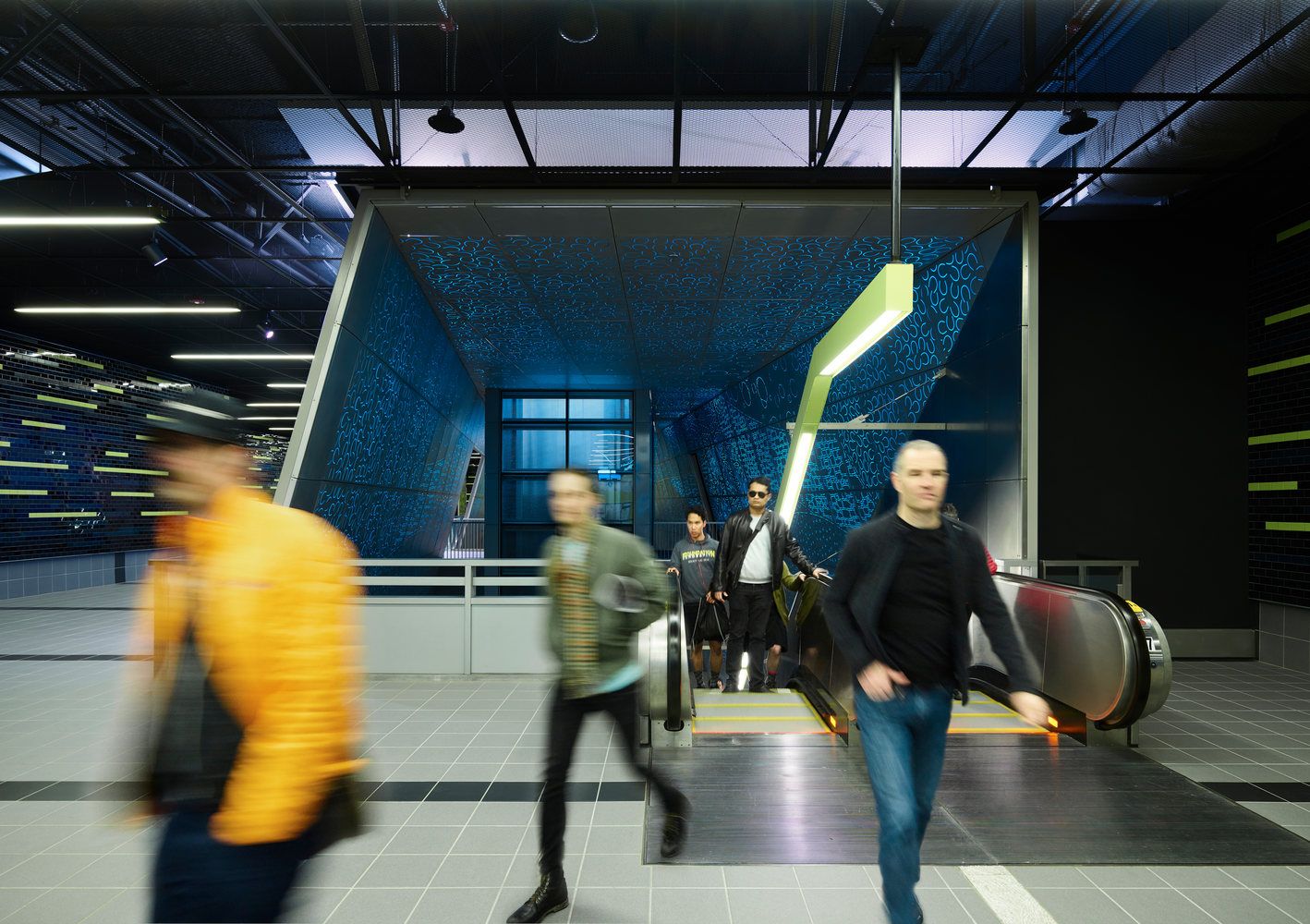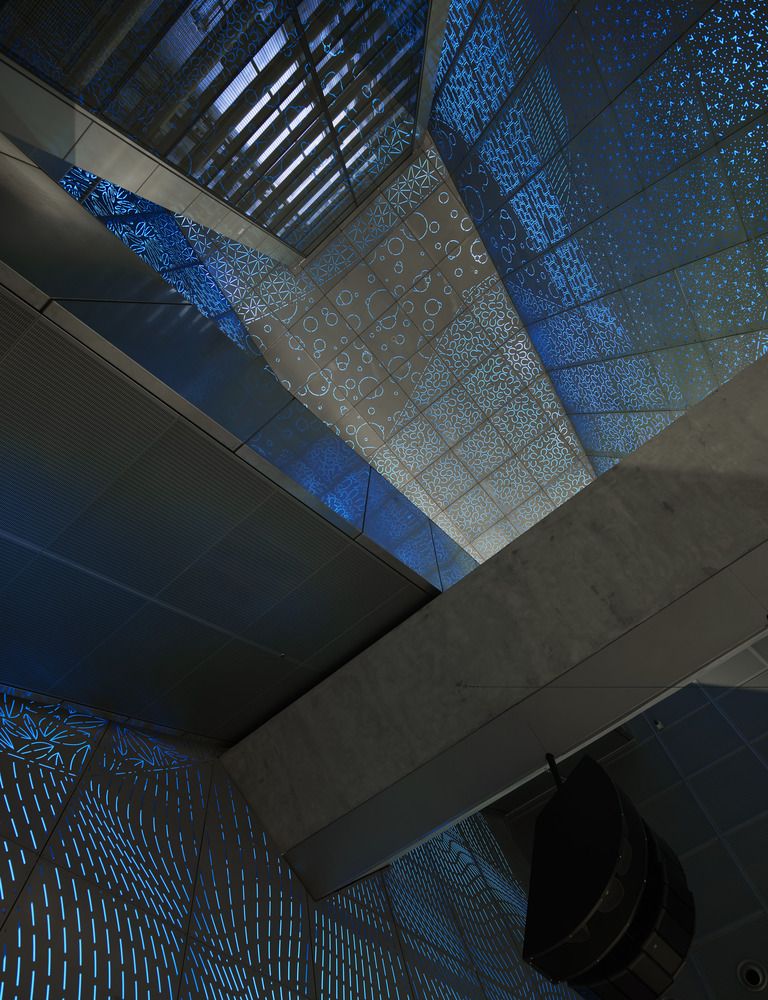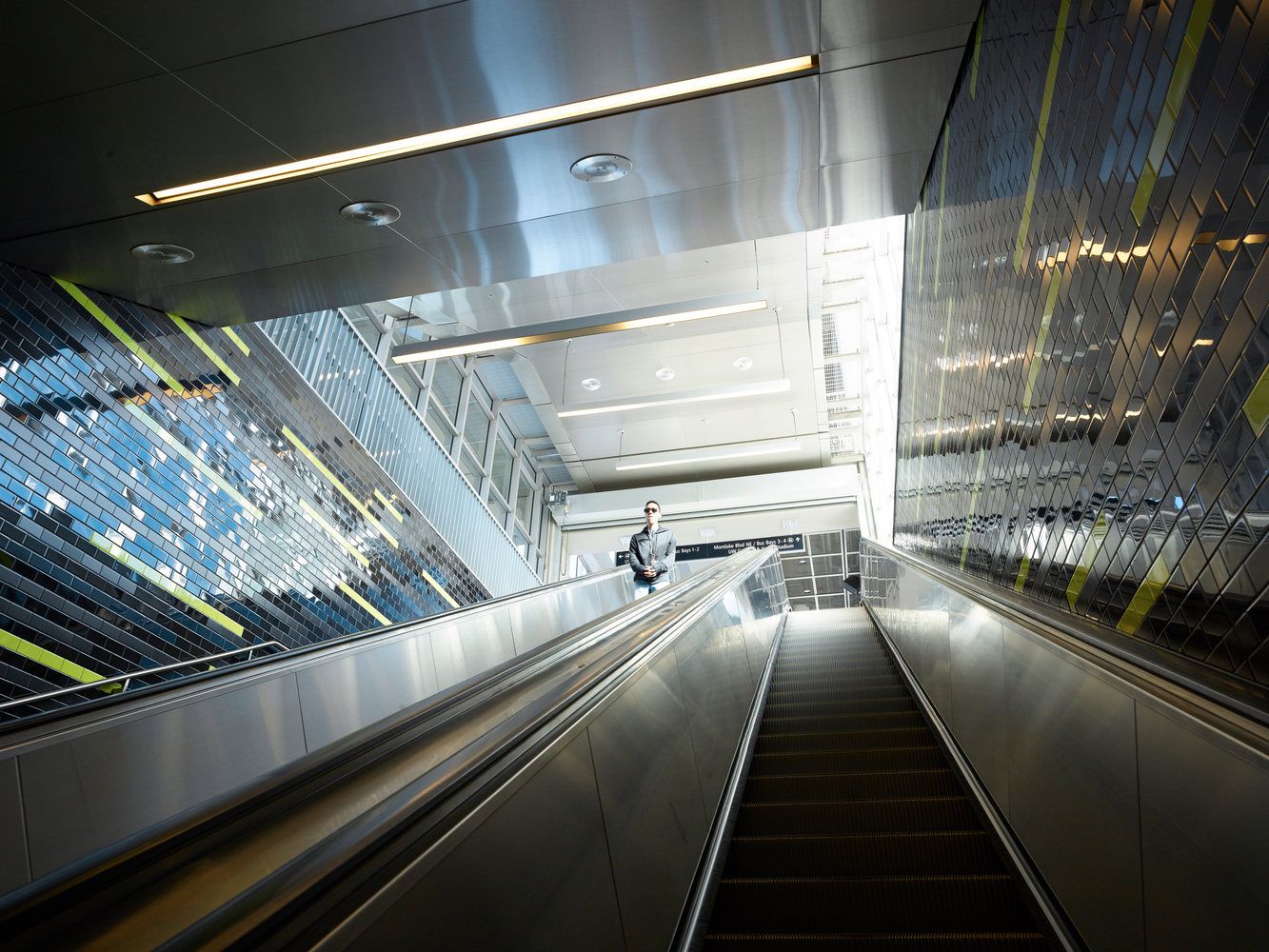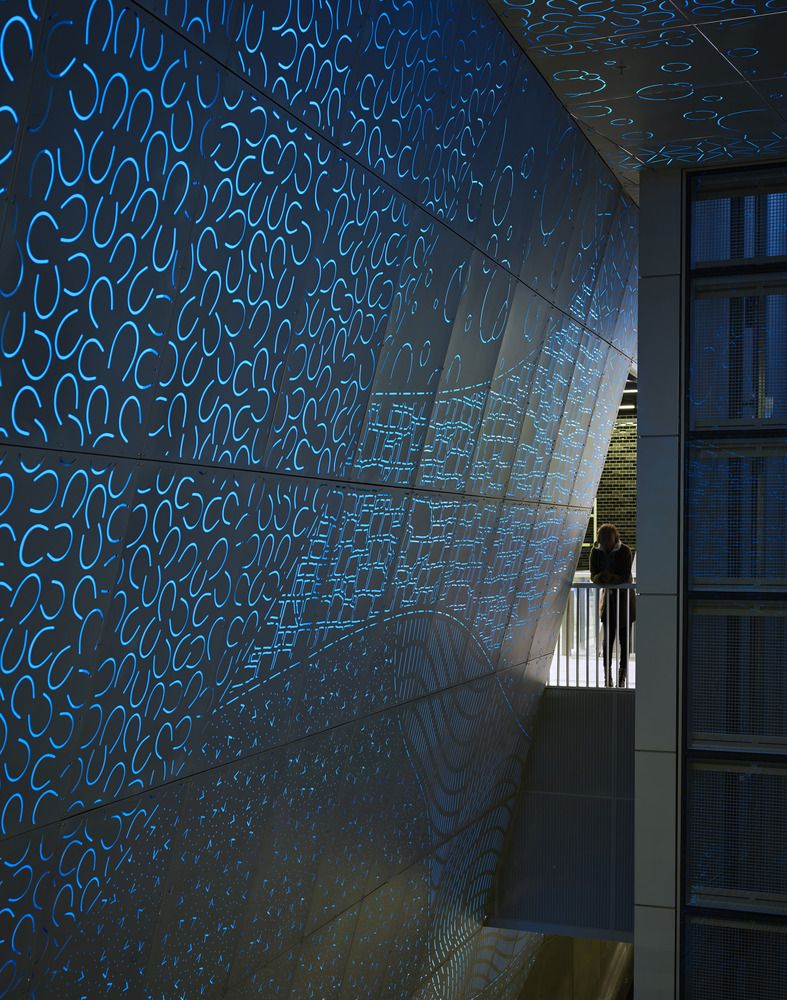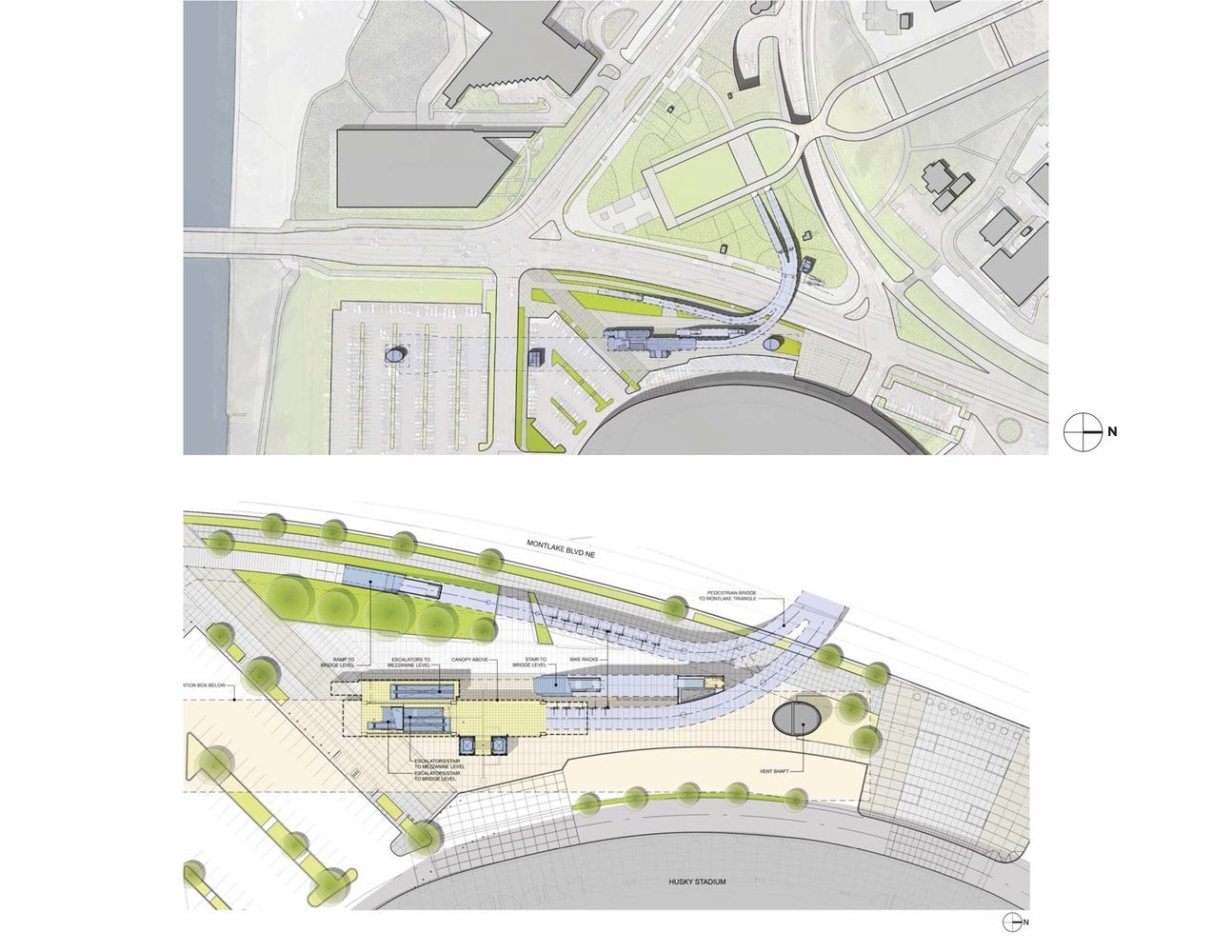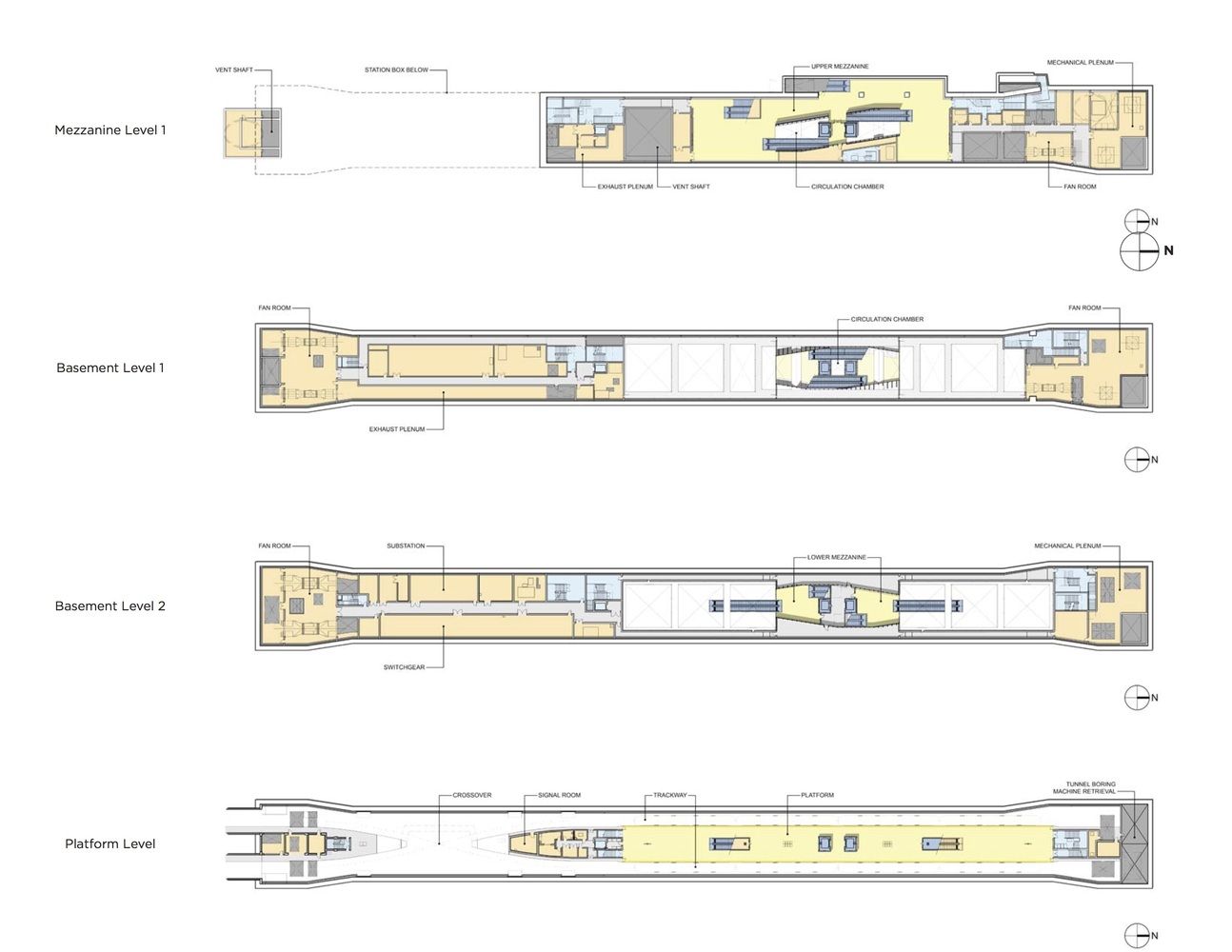More than a light rail station, the Sound Transit’s University of Washington Station, designed by LMN Architects, adds multiple facets to the urban fabric at the intersection of Montlake Boulevard and Pacific Street.
Knitting together transportation modalities from bike to bus to pedestrians to trains, the multi-disciplinary design of the 156,000-square-foot station creates a unified mobility solution at a problematic street intersection, one of the busiest in Seattle, and provides a unique gateway to the UW campus through its above and below-grade experiences.
The project includes a train platform 100 feet underground, accessed by escalators and elevators from a two-level glass entrance structure at grade. Along the way, users pass through a tall, vertical circulation chamber featuring “Subterraneum,” an art installation by Leo Saul Berk, who worked with LMN to blend architecture and sculpture in expressing the geological layers of soil surrounding the station walls.
The station’s new bicycle and pedestrian bridge — with stairs, escalators, and ramps connecting both levels of the entrance structure — curves gently as it spans over Montlake Boulevard to land on the university campus.
Each element of the project is carefully considered as a component of a larger whole, set within a complex web of uses that encompasses the campus, the surrounding neighborhoods, and important university destinations such as Husky Stadium, Alaska Airlines Arena and the UW Medical Center.
“LMN’s work at the University of Washington Station beautifully and intricately navigates an almost unbelievably complex urban node,” says Rebecca Barnes, university architect and associate vice provost for campus and capital planning at the University of Washington. “The outcome is a great architectural and urban design achievement borne of many acts of imaginative and insightful civic leadership.”
Public space underground
Between the surface and the train platform 100 feet below, circulation paths follow an orchestrated sequence of moments, constantly orienting users to the station’s overall volume, structure, and internal flow. Visual connections between levels create a strong sense of place. The glass entrance structure frames views of the surrounding context, including Lake Washington and the Cascade Mountains. The transparency also serves as a light well, allowing daylight to reach down to the mezzanine level.
Colored ceramic wall tiles animate the mezzanine and ticket machine areas with energetic green motion lines. A green overhead service armature — integrating light fixtures and public-address speakers — provides clear wayfinding throughout the circulation path between surface and platform. Each piece works together and builds up the climactic experience of “Subterranean” in the central circulation chamber. Mechanical infrastructure is largely invisible from these public spaces.
Concealed behind the scenes, an emergency smoke ventilation system, track crossover area, and associated maintenance spaces are nearly as large by volume as the circulation areas in the station’s below-grade footprint.
Two elliptical-shaped ventilation towers emerge above-grade, anchoring each end of the structure, and fade from view through the strategic use of perforated screens. The towers serve the emergency smoke ventilation system for the entire tunnel, along with fans at every station on the line that works in tandem to move air and smoke in the event of an emergency.
Public art
At the heart of the station experience, the escalators and glass elevator pass through a 55-foot-high central chamber, one of the tallest interior volumes in the city. Working with artist Leo Saul Berk, a UW graduate known for exploring subterranean themes in mixed-media sculpture and installations, “Subterranean” blends sculpture and architecture in exploring the opportunities of the underground condition.
Backlit, perforated metal panels clad the chamber walls, displaying luminous patterns representing geological layers while suffusing the space with ambient light. The vertical angle of the chamber walls changes along the long axis, creating a twisting volume that offers varying views of the artwork from different vantage points throughout the station.
Four escalators and two glass elevator columns spill through this soaring space, providing a dynamic experience of the art while riding up or down. Various vantage points at the mezzanine and at the bottom of the chamber offer a chance to take in the views while observing people coming and going to the train platform.
Project Info:
Architects: LMN Architects
Location: Seattle, WA, United States
Area: 157.856 ft2
Project Year: 2016
Photographs: Kevin Scott
Project Name: Sound Transit U Link University of Washington Station
Photography by © Kevin Scott
Photography by © Kevin Scott
Photography by © Kevin Scott
Photography by © Kevin Scott
Photography by © Kevin Scott
Photography by © Kevin Scott
Photography by © Kevin Scott
Photography by © Kevin Scott
Photography by © Kevin Scott
Photography by © Kevin Scott
Photography by © Kevin Scott
Photography by © Kevin Scott
Photography by © Kevin Scott
Photography by © Kevin Scott
Photography by © Kevin Scott
Photography by © Kevin Scott
Photography by © Kevin Scott
Photography by © Kevin Scott
Photography by © Kevin Scott
Photography by © Kevin Scott
Situation
Floor Plans


